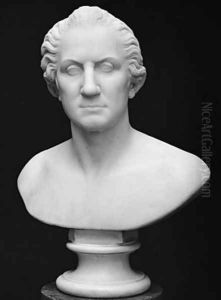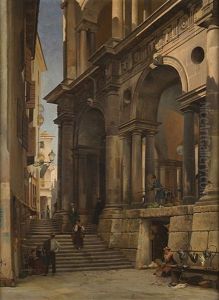Horatio Greenough Paintings
Horatio Greenough was an American neoclassical sculptor, considered one of the pioneers of American art in the nineteenth century. Born on September 6, 1805, in Boston, Massachusetts, he was exposed to the arts at an early age and showed a keen interest in sculpture. He attended the prestigious Boston Latin School and later went on to study at Harvard University, where he continued to hone his artistic talents.
After graduating from Harvard in 1824, Greenough traveled to Rome to study classical sculpture, an unusual step for an American artist at the time. In Rome, he was deeply influenced by the works of ancient Greek and Roman artists, as well as the Italian Renaissance masters. He adopted the neoclassical style, which emphasized idealized forms and subjects inspired by classical antiquity.
Greenough's most famous work is perhaps the statue of George Washington, commissioned for the United States Capitol rotunda. The statue, completed in 1840, depicted the first president in a Roman toga, a choice that reflected the neoclassical style's emulation of classical Roman virtues but also received mixed reviews because of its unconventional portrayal of Washington. Despite the controversy, the statue cemented Greenough's reputation as a significant American sculptor.
Throughout his career, Greenough advocated for the recognition of American art and artists. He believed that the United States should develop its own artistic language and cultural symbols. In addition to sculpture, he wrote essays and corresponded with notable figures of his time, discussing art, aesthetics, and the role of the artist in society.
Greenough's health began to decline in the early 1850s, and he returned to the United States. He died on December 18, 1852, in Somerville, near Boston, at the age of 47. Although his life was relatively short, his work was influential in shaping an American identity in art and remains significant in the history of American sculpture.

